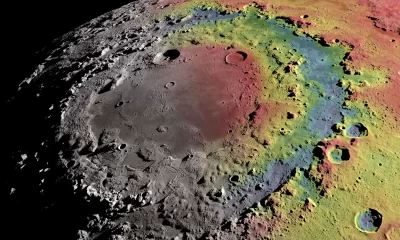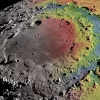Moon phases have captivated humans for centuries, filling the night sky with their ethereal beauty. The moon’s ever-changing appearance has inspired poets, artists, and dreamers, evoking emotions and sparking curiosity. In this article, we will explore the moon phases in 2022 specifically for the Northern Hemisphere, and delve into the impact they have on our lives.
Introduction: The beauty of Moon Phases
The moon, Earth’s natural satellite, showcases an awe-inspiring dance in the sky as it cycles through different phases. From the mystical darkness of the New Moon to the radiant splendor of the Full Moon, each phase offers a unique visual spectacle. However, moon phases are not merely a treat for the eyes; they hold profound significance in various aspects of our existence.
Understanding Moon Phases
To grasp the concept of moon phases, we must first understand the Moon’s orbit around the Earth. The Moon takes approximately 29.5 days to complete its lunar cycle. As it orbits our planet, the Sun’s light illuminates different parts of the Moon, creating the varying phases we observe.
There are eight primary moon phases: New Moon, Waxing Crescent, First Quarter, Waxing Gibbous, Full Moon, Waning Gibbous, Third Quarter, and Waning Crescent. Each phase transitions into the next, presenting a captivating transformation in the Moon’s appearance.
Moon Phases in 2022 – Northern Hemisphere
In the year 2022, residents of the Northern Hemisphere will have the opportunity to witness the mesmerizing journey of the Moon through its phases. Let’s explore each phase briefly:
- New Moon: The New Moon signifies the beginning of the lunar cycle when the Moon is not visible from Earth. It appears as a dark silhouette against the night sky.
- Waxing Crescent: As the Moon starts to reveal itself, a slender crescent emerges. This phase symbolizes growth, new beginnings, and intentions.
- First Quarter: The First Quarter occurs when half of the Moon is visible. It marks a time of action, making decisions, and overcoming challenges.
- Waxing Gibbous: The Waxing Gibbous phase showcases a nearly full Moon, with only a small portion remaining unilluminated. This phase represents refinement, progress, and anticipation.
- Full Moon: The Full Moon is a celestial spectacle, illuminating the night sky with its radiant glow. It symbolizes completion, abundance, and heightened emotions.
- Waning Gibbous: After the Full Moon, the Waning Gibbous phase begins. The Moon gradually diminishes in size, indicating release, gratitude, and reflection.
- Third Quarter: The Third Quarter signifies the final quarter of the lunar cycle. It encourages us to evaluate our progress, make adjustments, and let go of what no longer serves us.
- Waning Crescent: The Waning Crescent phase is the last before the New Moon, presenting a thin, fading crescent. It embodies surrender, rest, and preparation for new beginnings.
Influence of Moon Phases
Moon phases have influenced human culture, behavior, and traditions throughout history. They have been revered in folklore, celebrated in festivals, and regarded as omens of change. Moreover, moon phases affect nature and wildlife, influencing animal behavior, plant growth, and ocean tides.
On a personal level, moon phases can impact our emotions and energy levels. Some people experience heightened intuition during the Full Moon, while others feel a sense of release during the Waning Crescent. Understanding these influences allows us to navigate our lives with greater awareness.
Observing Moon Phases
Observing moon phases can be a captivating and rewarding experience. To witness the Moon’s celestial dance up close, you can use a telescope or even a pair of binoculars. Finding a suitable location away from city lights enhances visibility and provides a clearer view of the lunar surface.
Here are some tips for observing moon phases:
- Check the lunar calendar for accurate phase timings.
- Use a tripod to stabilize your telescope or binoculars.
- Take note of the Moon’s position and observe the surrounding landscape.
- Experiment with different exposure settings to capture detailed photographs.
- Engage with fellow enthusiasts or join astronomy clubs for a shared experience.
Moon Phases and Astrology
Moon phases play a significant role in astrology, affecting the interpretation of birth charts and horoscopes. Each moon phase holds unique energy that can influence an individual’s personality traits and emotional well-being. Astrologers consider the interaction between moon phases and zodiac signs to gain deeper insights into an individual’s life journey.
Conclusion
Moon phases continue to mesmerize us, reminding us of the grandeur of the universe and our interconnectedness with celestial bodies. The ever-changing lunar landscape evokes a sense of wonder and invites us to contemplate our place in the cosmos. Whether we observe moon phases for their natural beauty, cultural significance, or personal growth, they provide a gateway to a deeper understanding of ourselves and the world we inhabit.
FAQs:
- Can moon phases affect human behavior?
- Moon phases have long been associated with influencing human emotions and behavior. While scientific evidence is inconclusive, many individuals report experiencing mood changes during different moon phases.
- Are moon phases the same worldwide?
- Yes, moon phases occur simultaneously worldwide. However, the orientation and visibility of the Moon’s phases may vary depending on the observer’s location.
- Can moon phases affect sleep patterns?
- Some people claim to experience changes in their sleep patterns during certain moon phases. However, more research is needed to establish a definitive link between moon phases and sleep quality.
- Do moon phases affect gardening?
- Moon phases have been traditionally linked to gardening practices. Some gardeners believe that planting and harvesting crops in alignment with moon phases can enhance their growth and yield.
- How can I capture the beauty of moon phases through photography?
- To capture stunning photographs of moon phases, use a tripod to stabilize your camera, experiment with different exposure settings, and consider using a telephoto lens for better magnification.














